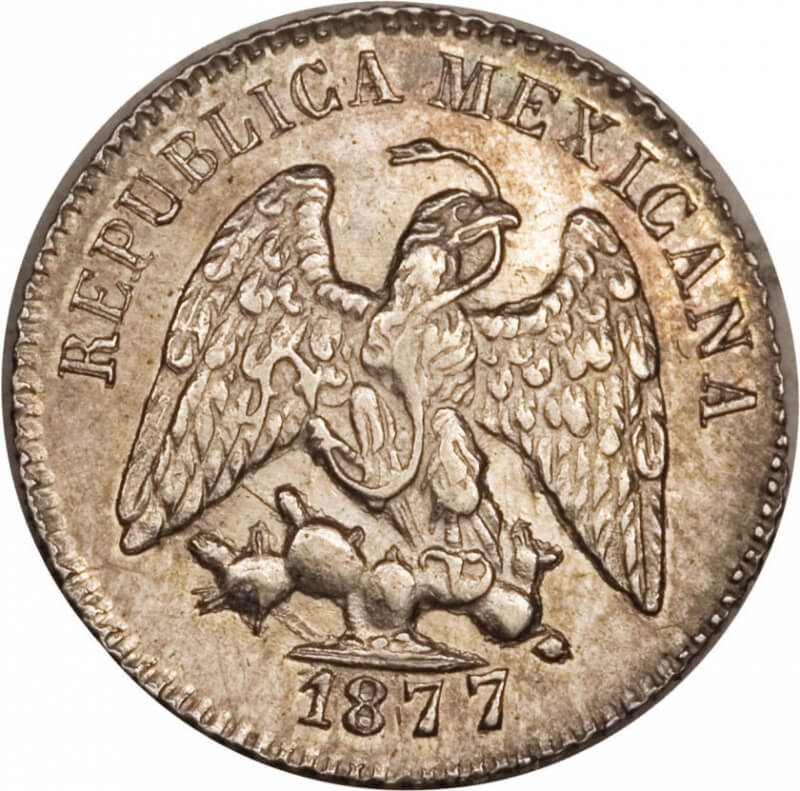**Every day this week we will highlight submissions from the My Coin’s Story Young writing contest. Young Numismatists were asked to write a historical fiction story based on a favorite coin. The winners will be revealed on the blog on Friday, Dec. 19.
I was sitting, useless, on a dusty desk beside a boy’s bed. In the
beginning of my life, I was owned by a wealthy Mexican woman in Mexico City.
Then on my way to the market, I fell out of her bag and landed on the manure smelling
street. I would have been stomped flat by the up-coming horse if a ten-year-old
boy hadn’t run onto the street and grasped me. He brought my metallic body to
his shabby shack in poverty-stricken Tlaxcala. I learned later that the boy,
José Pérez, saw my glinting body and was so frantic for money he risked himself
to save me.
Now, I live by his bed. Every day, the boy would scold me, “¿Por qué (Why) do
you have to be five centavos? Why can you not be a peso? I need the money! How
do you think I can buy carne asada with five centavos?” It was torture.
However, the poor boy had a worthy cause; he wasn’t greedy. It was his papa’s
birthday the next day and the Pérezes were tired of endless beans and rice for
breakfast, lunch, and dinner. I felt very sorry for José, who was trying to
earn 1000 centavos by the end of the day to buy delicious carne asada. I was
especially sorry when his papa came home that night with horrible news.
“Hola (Hello), I’m home!” called a back-bent and earthy-smelling man. He was
José’s papa, a farmer, earning little if anything. José, keeping me in his
hand, and Maria, José’s mama, rushed down creaky, rotting stairs and hugged the
dirt-covered man. At dinner, the man, Arturo by name, told the family about
inflation. Pesos and centavos were losing value. If José was going to buy carne
asada, he would need to do it quickly.
The next day was Dia De La Indepencia, and Papa’s birthday. José had given up
hope for buying carne asada, and decided to spend me and his holiday allowance,
ten centavos, for papa’s favorite candy, mints. Dia De La Indepencia is
celebrated because it represents the anniversary of Mexico’s independence from
Spain. Dia De La Indepencia is my favorite holiday because an important
activist is displayed on my shiny brass front. Her name is Maria Josefa, also
known as La Corregidora.
The fastest road to the candy shop was deserted because there was a parade
happening elsewhere in town, so José traveled alone. José was just about to
enter the candy store when I noticed a pile of pesos and a leather object with
golden adornments. I knew that was what José wanted, so I wiggled out of his
hand and rolled to the pile. The boy hastily followed. When he got to me, he
saw the money, but was honest and didn’t steal it. Instead he looked around and
saw a ten year old girl, well dressed, sitting by a tree, sobbing. José
approached the girl and asked, “What is wrong, Niña (Girl)?” The girl looked up
and told José about how she was sent by her grandma to get a Dia De La
Indepencia meal. She said that she took her Grandma’s expensive purse, along
with her own pesos. Then she said, “The purse and my pesos slipped out of my
hand while I was skipping and I looked everywhere. I have to bring that purse
back! I’ll be grounded for months!” José looked to the pile of coins and said,
“I think I know where your purse and pesos are.” After the girl and her purse
were reunited, she was ecstatic. José said goodbye and started to leave, but
the girl stopped him. She said, “Niño (Boy), take some pesos. You are a life
saver.” José thanked the girl with all his heart and went to the market to get
papa’s Dia De La Indepencia/ birthday meal.


